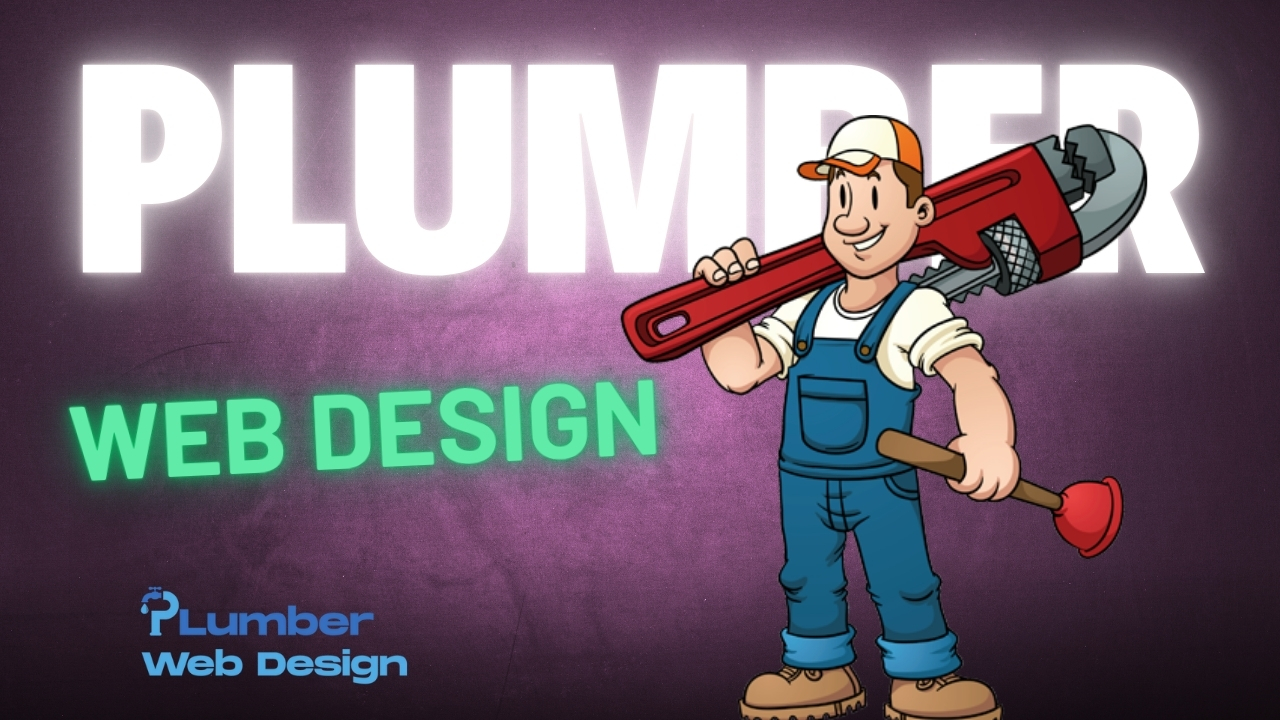Whether you offer emergency repairs, leak detection, or bathroom renovations, your customers are searching for services online before picking up the phone. That’s why having a high-performing, professional, and mobile-friendly website is no longer optional—it’s essential.
In this guide, you’ll learn what makes an effective plumber web design, how to build a trustworthy digital presence, and how to convert your site visitors into booked jobs. We’ll also cover design tips, must-have pages, SEO strategies, and more.
Why Plumbers Need a Strong Website
A well-designed website helps you:
-
Build trust with potential customers
-
Showcase your services clearly
-
Rank on Google and get found locally
-
Convert visitors into phone calls and bookings
Here’s the reality: if your site looks outdated, loads slowly, or is hard to navigate, most users will leave in seconds. And that means lost revenue.
Essential Features of a Plumber Website
A strong plumber website doesn’t need to be flashy—but it must be functional, fast, and focused on your customers’ needs.
1. Clear Contact Information
Display your phone number, email, and service area at the top of every page. Add a click-to-call button for mobile users.
2. Service Pages
Break down each service you offer into its own page:
-
Emergency plumbing
-
Drain cleaning
-
Leak repair
-
Pipe installation
-
Water heater services
This improves SEO and makes it easier for customers to find what they need.
3. Professional Design
Use a clean, modern layout with:
-
Easy-to-read fonts
-
Consistent color scheme (ideally matching your logo)
-
High-quality images (not blurry or generic)
4. Trust Signals
Include:
-
Customer reviews
-
Before & after photos
-
Licenses and certifications
-
Guarantees or warranties
5. Fast Load Speed
Google recommends websites load in under 3 seconds. Use compressed images and reliable hosting to speed things up.
6. Mobile-Friendly Layout
Over 60% of searches come from smartphones. Your plumber site must look and work great on all devices.
7. Booking or Quote Form
Add a simple form with fields like name, phone, service needed, and preferred time. You can also integrate live chat for quick support.
Design Tips for Plumber Websites
Here are practical design tips to improve user experience and conversions:
✅ Keep It Simple
Avoid clutter. Focus on clear sections, strong calls to action (like “Call Now”), and easy navigation.
✅ Use Real Photos
Showcase your actual team, van, tools, and finished jobs. Authentic images build credibility.
✅ Use Action-Oriented Language
Instead of saying, “We are plumbers in XYZ city,” try “Get fast, reliable plumbing service in XYZ—call now!”
✅ Use Testimonials on Every Page
Sprinkle customer reviews throughout your site—not just on a testimonial page.
SEO Tips for Plumber Websites
If your site doesn’t rank on Google, it’s invisible to most people. Use these local SEO strategies:
1. Target Local Keywords
Use search terms like:
-
“plumber in [city]”
-
“emergency plumbing [neighborhood]”
-
“best drain cleaning near me”
2. Optimize Your Google Business Profile
Ensure your listing is verified, accurate, and includes:
-
Services
-
Photos
-
Service hours
-
Reviews
3. Use Schema Markup
Add LocalBusiness and Service schema to help search engines understand your content and improve visibility in maps and snippets.
4. Create Location Pages
If you serve multiple cities, build unique pages for each to help rank locally.
5. Get Reviews Consistently
Encourage happy clients to leave 5-star Google reviews. This boosts trust and helps your rankings.
Must-Have Pages for a Plumbing Website
Here are the key pages every plumber site needs:
-
Home: Clear summary, call-to-action, trust signals
-
About Us: Background, team bios, mission
-
Services: Detailed info on each offering
-
Contact: Map, phone, form, hours
-
Testimonials: Real client feedback
-
FAQs: Answer common questions about pricing, timing, emergencies
-
Blog (Optional): Helps with SEO and shows your expertise
Common Mistakes to Avoid
Even good plumbers make web design mistakes. Avoid these:
❌ Outdated design or broken links
❌ Missing service area info
❌ Slow site speed
❌ No mobile optimization
❌ Hard-to-find contact details
❌ No reviews or trust elements
❌ Using only stock images
Examples of Effective Plumber Websites
Here are a few elements seen on high-performing plumbing sites:
-
Hero section with a bold headline and call button
-
List of services with icons or images
-
Trust badges like “Licensed & Insured” or “5-Star Google Rating”
-
Live chat for instant support
-
Sticky phone button on mobile view
Choosing the Right Platform for Your Site
Many plumbers use WordPress, and for good reason—it’s flexible, SEO-friendly, and easy to maintain. Paired with a fast theme like Astra or Kadence and a page builder like Elementor, you can create a beautiful, custom site without coding.
Other options:
-
Wix: Easy to use, but less SEO control
-
Squarespace: Clean design, fewer plugins
-
Shopify: Best for e-commerce, not service-based sites
Final Thoughts: Why Your Website Matters
Your website is the most important part of your online presence. It’s where customers decide to trust you—or move on to the next plumber.
A clean design, fast loading speed, clear service information, and strong SEO can make the difference between a struggling business and one that’s fully booked weeks ahead.

